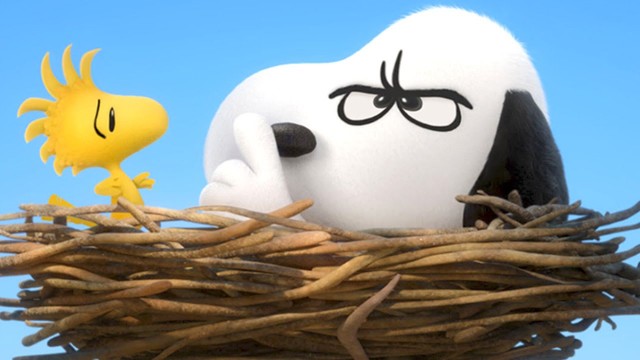WARNING: Spoilers for Spectre, The Peanuts Movie, Star Trek Into Darkness and The Dark Knight Rises follow.
At this point, James Bond is no stranger to opening against animated family films. In fact, of the four Daniel Craig 007 movies, half of them have opened on the same weekend as a feature aimed at family audiences, while the other half have opened a solitary week after a major new animated film hit the market. It’s no shocker that family movies tend to open against Bond and his cohorts; those 007 adventures tend to be seen by older viewers and don’t have as much value for families as, say, PG-13 blockbusters like the Marvel Cinematic Universe or Jurassic World.
But what’s interesting is that the family movie that opened against the newest James Bond endeavor, Spectre, was one that could actually teach o’l Bond a few lessons when it comes to properly executing fan service. That family film in question, of course, is the utterly delightful Peanuts Movie. This Steve Martino production does a lot of things right, but one of its best features is how it foregoes just shoehorning in gratuitous winks to past incarnations of the characters and instead blazes its own storytelling trail to earn the audiences emotional investment.
Elements from the 50 years of comic strips that the motion picture is based on do crop up of course, but they’re in service of the plot, and not the other way around. The perfect proof of this approach comes a minute or two into the credits, when a vignette plays depicting Lucy pulling out that o’l football from Charlie Browns reach. Here’s one of the most iconic moments from all of Peanuts lore, delicately placed into the end credits instead of having the film itself screech to a halt to allow for this bit to occur.
That’s the kind of restraint that doesn’t crop up in the final scenes of Spectre, where, yeah, of course Chrstoph Waltz is play Blofield. His character concealing his true alias (prior to him revealing himself as really being Blofeld, the character Waltz is playing went under the names Franz Oberhauser) has no real effect on the plot and the same goes for a white Persian cat that’s just lurking around Blofelds office. Perhaps if the rest of the movie was super duper entertaining and fun to watch such storytelling faux pas would be forgivable, but considering the climax is as boring as me rambling about the flaws of the Star Wars prequels.
Considering we went through this whole dog-and-pony show of shoehorned in classic villains with Star Trek Into Darkness and its version of Khan two years ago (and that went over about as well as a lead balloon, to put it gently), why do filmmakers keep doing this form of “fan-service”? A lot of discussion about this exact query popped up in the comment section of my Spoiler discussion of Spectre, which, just a heads up to my dear readers, was tons of fun to read. Honestly though, my main theory is a relatively simple one; I have a hunch that the reason Kahn and Blofeld keep getting shoehorned in is that the writers of films like Spectre hope that the mere presence of an iconic figure like Blofeld will serve as an acceptable substitute for an actually menacing and well developed villain. In other words, they’re hoping we’re all too bowled over by the inherent existence of a modern day Kahn to overlook the fact that his overall “evil plan” is incoherent.
It may also stem from a sense of obligation to such iconic silver screen characters, with the screenwriters feeling like a James Bond movie can’t survive without the presence of Blofeld regardless of if he actually fits into the overall “story” at all. The middling reception of Spectre should show that such a storytelling choice isn’t necessary, and the fact that a perfect demonstration of how to properly utilize “fan-service” is currently playing in over 3,900 theaters in North America (The Peanuts Movie of course) should serve as an example to writers of future movies like Spectre or Star Trek Into Darkness that, to paraphrase Ian Malcom (Jeff Goldblum) just because you can incorporate a famous villain or line from past films into your motion picture doesn’t mean you should.
Another great example of terrible “fan-service” dialogue (that I couldn’t find a place to reference in the body of this essay); when Joseph Gordon-Levitt is called Robin at the end of The Dark Knight Rises. Man, that just doesn’t make sense at all, both in the context of the films world (when did John Blake reference that he was using a fake first name?) and the overall aesthetic of the motion picture (shoehorning in Robin into these grim n’ gritty Christopher Nolan Batman movies would be like having a Teletubbie randomly romping in the background of a scene in The Tree of Life).

